For heat-sensitive additives, you'll need reliable temperature controls to maintain product integrity. Digital precision thermostats offer real-time monitoring for soap saponification, while water bath systems provide stability within ±0.15°C. Infrared monitoring tools prevent contamination with non-contact readings, and specialized cold process equipment keeps soap at the ideal 70°F-110°F range. Climate-controlled cabinets and refrigerated units preserve additive potency during storage. The right temperature control system protects your formulations from costly thermal damage.
5 Best Temperature Controls For Heat-Sensitive Additives
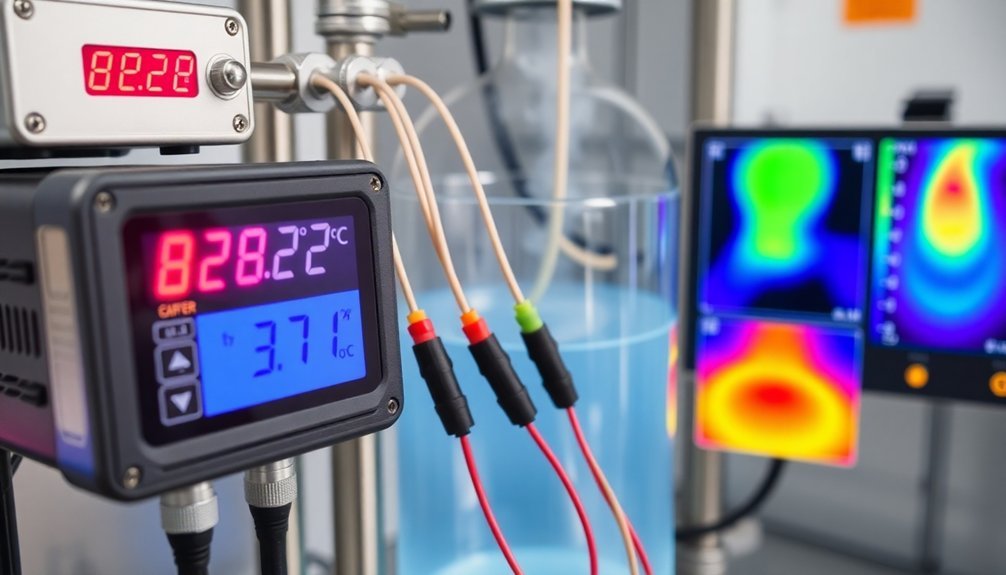
When handling heat-sensitive additives like probiotics and oil-based supplements, you'll need reliable temperature control systems to preserve their potency.
Digital thermostats with precise temperature sensors offer real-time monitoring capabilities, allowing you to detect and respond to fluctuations before they compromise your products.
Heating circulators and recirculating coolers provide consistent temperature maintenance, essential for additives that lose efficacy when exposed to heat. A quality temperature controller with alert functionality will notify you when conditions drift outside acceptable parameters.
For storage, invest in refrigerated units or climate-controlled cabinets with integrated temperature sensors. These solutions help maintain the integrity of your probiotics by preventing CFU loss and extending shelf life.
Digital Precision Thermostats for Soap Saponification
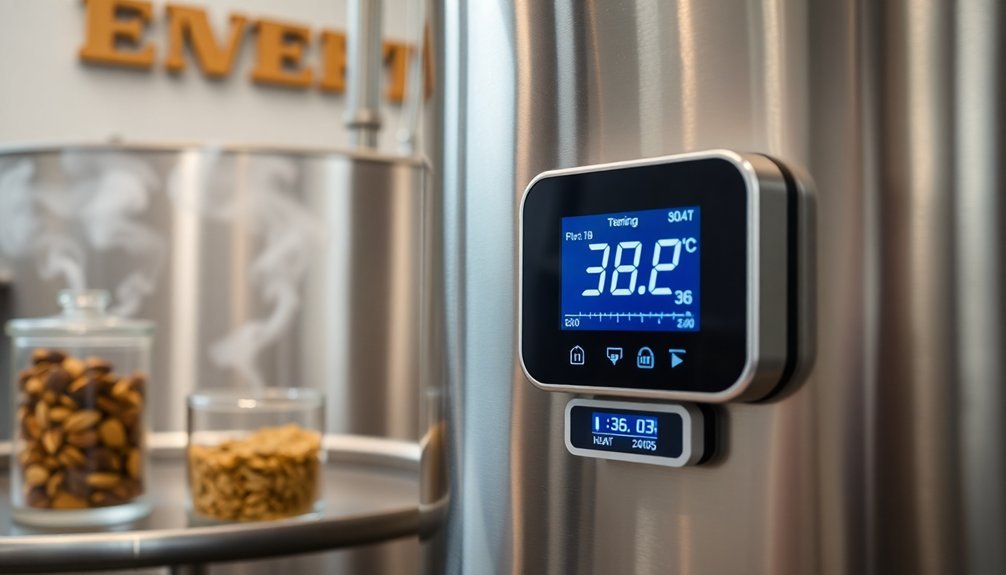
Just as heat-sensitive additives require careful temperature management, soap making demands equally precise control during the saponification process. Digital precision thermostats maintain the vital 95°F-105°F range needed for proper chemical reactions, ensuring your soap achieves ideal consistency.
You'll appreciate these essential temperature controls for several reasons:
- User-friendly interfaces allow for accurate adjustments, preventing overheating that can ruin your batch.
- LED indicators and error codes alert you to temperature deviations, keeping your saponification process on track.
- Water-resistant probes can be integrated directly into soap mixtures for continuous monitoring.
Most models let you switch between Celsius and Fahrenheit, accommodating your preferred measurement system.
These precision tools eliminate guesswork, making your soap-making process more reliable and your finished products more consistent.
Water Bath Temperature Regulation Systems
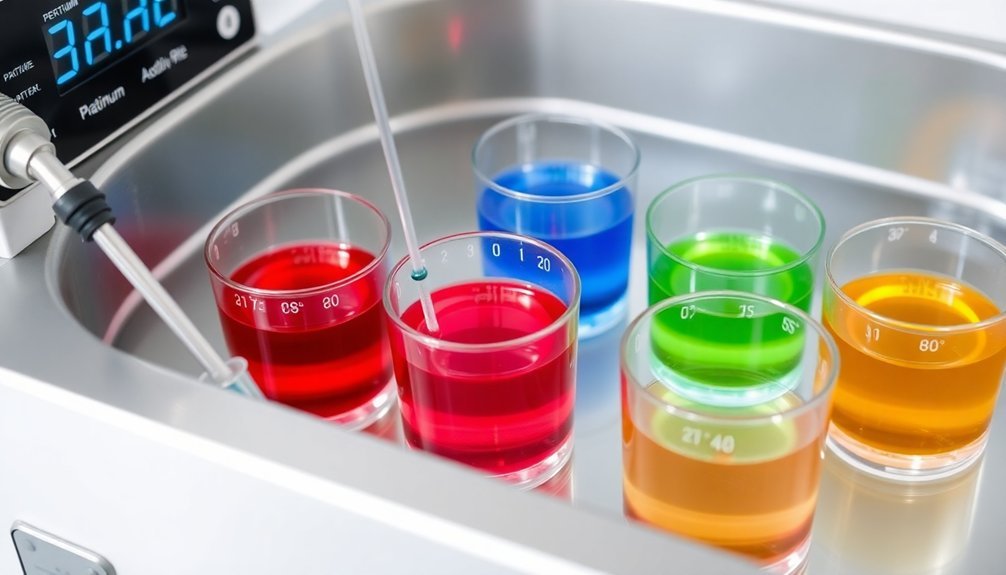
Precision water baths represent the gold standard for processing heat-sensitive additives that demand unwavering temperature control. With remarkable stability of ±0.15°C, you'll achieve consistent results that protect your delicate ingredients from thermal degradation.
These systems operate within a precise temperature range from +18°C to 99.9°C, giving you flexibility to work with various heat-sensitive materials. The ergonomic design features like side grips and drain screws make maintenance simple while handling your valuable additives.
| Feature | Benefit | Application |
|---|---|---|
| ±0.15°C stability | Prevents degradation | Fragile botanical extracts |
| Splash-proof design | Enhanced safety | Volatile compounds |
| LED temperature display | Clear monitoring | Critical phase changes |
| Drain screws | Easy cleaning | Between sensitive batches |
| Adjustable shaking | Uniform distribution | Suspension formulations |
Infrared Temperature Monitoring Tools for Fragile Additives
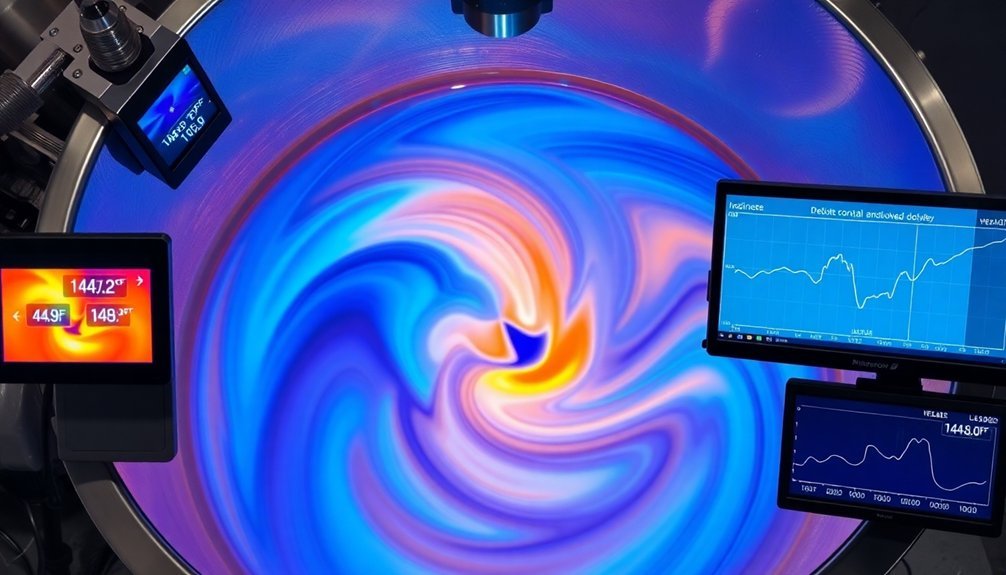
Non-contact infrared monitoring tools revolutionize temperature management for your most delicate additives.
These devices provide real-time readings with remarkable accuracy (less than ±1.5°C error margin), allowing you to make immediate adjustments during processing and storage. The adjustable emissivity settings guarantee precise measurements across various surfaces commonly used with heat-sensitive materials.
To guarantee the safety and quality of your fragile additives, consider these advantages:
- Zero physical contact prevents contamination or disruption of sensitive materials
- Real-time monitoring enables instant intervention when temperatures drift beyond acceptable ranges
- Data logging capabilities let you track temperature patterns over time, documenting compliance with quality standards
With infrared temperature monitoring tools, you'll maintain ideal conditions for even your most temperature-sensitive additives.
Cold Process Soap Temperature Control Equipment
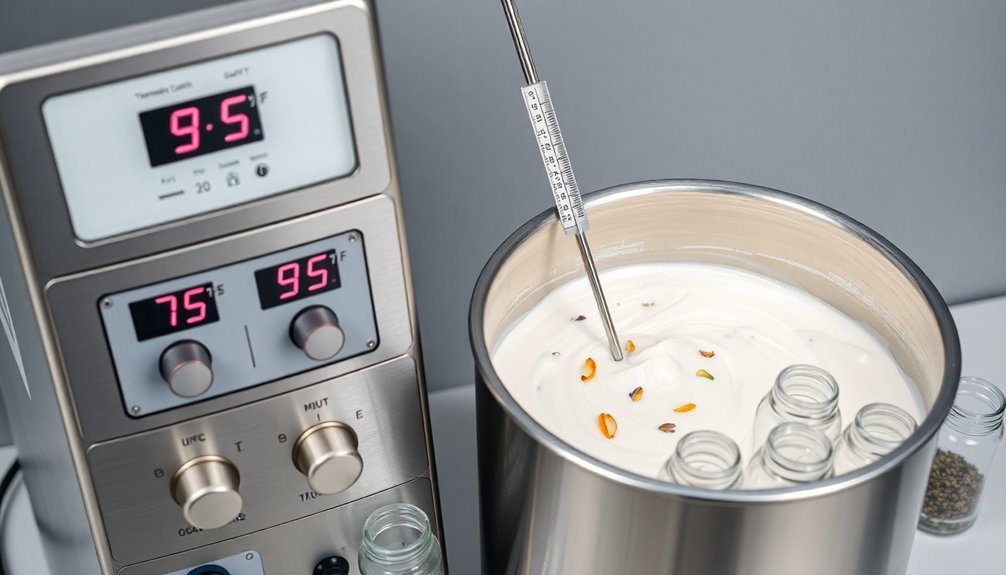
While crafting cold process soap demands careful attention to detail, maintaining precise temperatures between 70°F and 110°F (21°C to 43°C) remains the cornerstone of successful saponification.
You'll find digital heat mat thermostats indispensable for your manufacturing process, as they maintain constant ideal temperatures throughout production.
Temperature fluctuations can greatly compromise your soap's quality, leading to separation issues or improper setting. To prevent these problems, incorporate water baths or heating circulators that provide stable temperature management for both your lye solution and oils.
Don't underestimate the importance of accurate temperature sensors in your equipment setup. When temperatures run too low, lye won't dissolve properly; when too high, your mixture may reach trace prematurely.
With the right temperature control equipment, you'll achieve consistent, high-quality results batch after batch.
Frequently Asked Questions
What Is the Best Setting Temperature Control?
You'll want to maintain temperatures between 68°F and 108°F for your temperature control settings. This range guarantees stability while preventing degradation. Digital thermostats with LED indicators will help you monitor and adjust precisely when needed.
Which Is the Most Appropriate Control Mode for Temperature Changes?
The most appropriate control mode for temperature changes is feedback control with PID algorithms. You'll achieve better stability and precision as it continuously compares sensor readings to your setpoint, making automatic adjustments when needed.
What Control System Is Used for Temperature Control?
You'll typically use a feedback control system for temperature control. It compares sensor readings to your set point and automatically adjusts heating or cooling elements to maintain your desired temperature with minimal deviation.
Which Hazard Class Is Highly Sensitive to Temperature Changes?
You'll find that multiple hazard classes are temperature-sensitive, particularly Class 3 (flammable liquids), Class 5.1 (oxidizing agents), Class 5.2 (organic peroxides), Class 6 (toxic substances), and Class 8 (corrosives). Each requires specific temperature controls.
In Summary
You'll find these five temperature control solutions transform your handling of heat-sensitive additives. Whether you're monitoring soap saponification with digital precision or using infrared tools for fragile ingredients, proper temperature management prevents degradation and guarantees product integrity. Invest in the right equipment for your specific needs, and you'll consistently achieve superior results while preserving the beneficial properties of your most delicate additives.

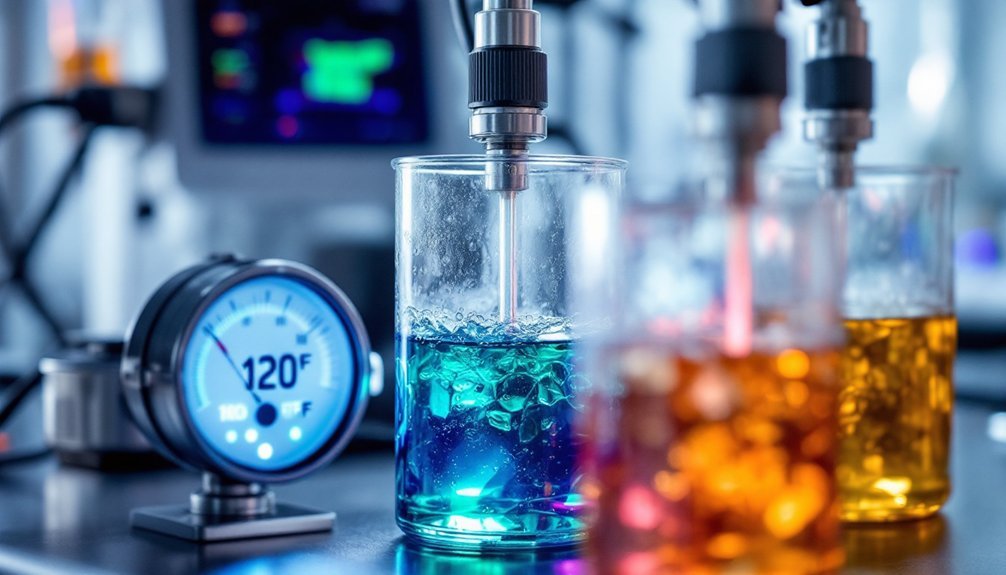



Leave a Reply